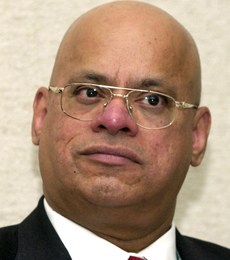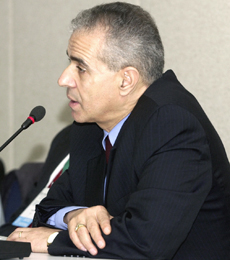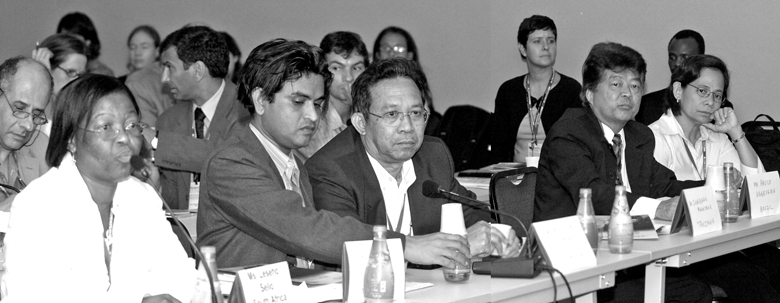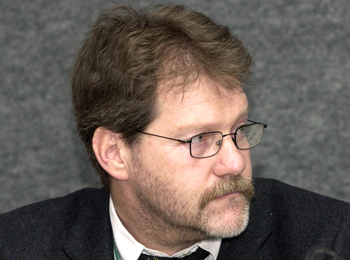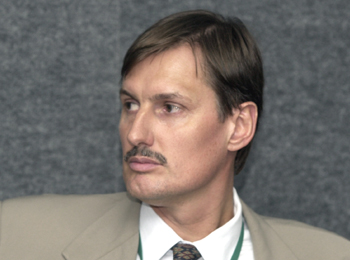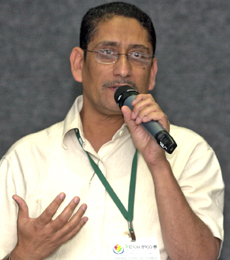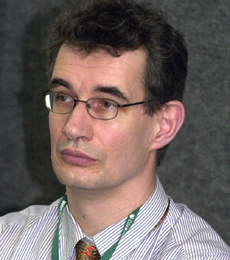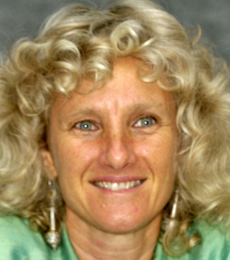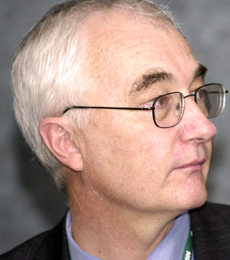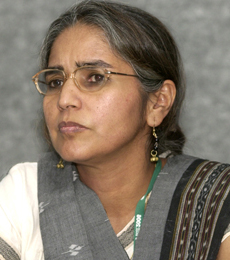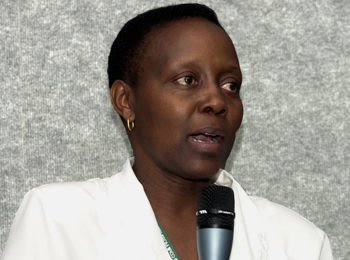 |
||
|
published by IISD, the International Institute for Sustainable Development
in cooperation with the CBD Secretariat |
|||
|
A Special Report on Selected Side Events at CBD COP-8
|
|||||
| 20-31 March 2006 | Curitiba, Brazil | |||||
 |
 |
||||
 |
|||||
|
United Kingdom Foreign & Commonwealth Office
|
|||||
Events convened on Friday, 24 March 2006
|
Incorporating Biodiversity into National Millennium Development Goal (MDG) Strategies: Lessons from Experience Presented by the United Nations Development Programme (UNDP) |
|||
|
Ahmed Djoghlaf, Executive Secretary of the CBD, highlighted UNDP’s technical contribution in ensuring that biodiversity considerations are integrated into processes designed to achieve the MDGs, and its support towards meeting the objectives of the Convention. Frank Pinto, UNDP, stressed the need to share lessons on how countries integrate biodiversity targets and commitments into national development plans and strategies that are designed to meet the MDGs. Pinto indicated that biodiversity conservation is a key development issue, more than a luxury restricted to wealthy countries, and that it is not an option, noting that it provides the “welfare system of last resort” for poor people and communities. He noted that UNDP recognizes the 2010 biodiversity target as a critical milestone towards achievement of related MDGs. John Hough, UNDP, presented the MDGs, a set of eight time-bounded and measurable goals and targets agreed upon by the world leaders at the 2000 UN Millennium Summit, emphasizing the importance of biodiversity in achieving all eight goals, not only MDG-7 (environmental sustainability). He stressed that embedding biodiversity in the national MDG strategies is likely to have more far-reaching impacts than sectoral National Biodiversity Strategies and Action Plans (NBSAPs), noting that countries committed at the 2005 World Summit to adopt and implement comprehensive MDG-based national development strategies by 2006. Sharing lessons learned at the national level, a series of presentations delivered by government representatives from the Philippines, Brazil, Tanzania, Malaysia, Maldives and South Africa, emphasized the need for awareness as “people need to appreciate the benefits of biodiversity in ways that are meaningful to them”, further emphasizing that “the environment isn’t just trees” to illustrate linkages between poverty and environment. Teresita S. Castillo, Department of Environment and Natural Resources, Philippines, noted the need to further harmonize policies on use and conservation of biodiversity. Paulo Kageyama, Ministry of Environment, Brazil, described actions taken such as the Brazilian Initiative for Biodiversity, Food and Nutrition, and the Central Initiative Action Plan to Prevent and Control Deforestation of the Amazon. Shaaban R. Mwinjaka, Division of Environment Vice President’s Office, Tanzania, described the National Strategy for Growth and Reduction of Poverty (NSGRP). Mohamad Bin Osman, National University of Malaysia, said MDG-7 is integrated into national development strategies, noting the need to ensure access to improved water sources in rural areas. Ahmed Saleem, Ministry of Environment, Energy and Water, Maldives, noted his country’s extreme dependence on biodiversity and the specific challenges faced as one of the Small Island Developing States. Leseho Sello, Department of Environmental Affairs, South Africa, emphasized the need for an enabling environment legislative framework to incorporate biodiversity in national strategies. |
|||
|
|||
|
|||
|
Brazil-German Co-Operation on Biodiversity Research in the Mata Atlântica Region of Brazil Presented by the German Ministry of Education and Research and the Brazilian National Council for Science and Technology |
||
|
Prot von Kunow, Ambassador of Germany to Brazil, noted the longstanding research cooperation between Brazil and Germany. Ione Egler, Ministry of Science and Technology, Brazil, described the Biodiversity Research Program (PPBio), a research network with stations in each Brazilian biome, and noted links with the BIOTA-Africa project.
Ana Lúcia Stival da Silva, Brazil National Council for research and technology, described the evolution of the cooperation project. Clóvis Borges, Society for Wildlife Research and Environmental Education (SPVS), noted that less than 7% of Mata Atlântica forest remains, with intense population pressures and less than 1% protected, and noted the need for Jörg Römbke, ECT Germany, discussed the theoretical methods used for the project. He noted the importance of defining soil quality in order to protect it, as well as soil organism biodiversity, classification and assessment. Hubert Höfer, State Museum of Natural History Karlsruhe, Germany, presented the SOLOBIOMA project, and stressed the importance of equality in partnership, and the benefit of student exchanges, but lamented the paucity of published research regarding Paraná’s biodiversity. Renato Marques, Federal University of Paraná, presented the Cachoeira Project, noting the limited amounts of remnant old growth forest, described the long time required for natural regeneration, and how it can be augmented through active forest restoration. He described species selection, noting the importance of the assessment of current biodiversity and structure. |
||
|
|||
|
Conservation and Livelihoods: Experiences and Perspectives from Fauna and Flora International Presented by Fauna and Flora International (FFI) |
||||
|
Evan Bowen-Jones, FFI, explained that FFI always works through local partners and that the panelists would outline work under the FFI Livelihoods Programme supported by the EU and the Dutch Ministry for Foreign Affairs (DGIS) and on FFI’s policy work on the application of the precautionary principle and on CITES and livelihoods. Ali Kaka, East African Wildlife Society, described how, in the Kuruwitu coastal area of Kenya, where natural resources have been severely over-utilized by locals and migrants, the community on its own initiative decided to close certain areas to fishing, create other sources of income, monitor fishing areas and instigate self-regulatory systems. He said this has led to improvements on resources and fish takes, improvements in degraded areas and living standards and an improved sense of ownership. Paulo Sérgio Sgroi Pupo, Amainan Brasil, highlighted some of the challenges in carrying out community conservation and livelihood initiatives a project in the Vale do Ribeira, Brazil. Referring to 12 guidelines established following a joint FFI, IUCN, Resource Africa and TRAFFIC project on biodiversity, natural resource management and the precautionary principle, Barney Dickson, FFI, emphasized the need to consider social and economic costs when applying the precautionary principle. He suggested that the benchmark for conservation agencies could be to ensure that in pursuing their objectives they do not harm the livelihoods of the poor. Discussion: Dickson said that although there is a lot of rhetoric about poverty, conservation and livelihoods, and most conservation agencies have stated in the most general terms that conservation should contribute to livelihoods, the extent to which this has resulted in change on the ground is questionable. He urged participants to challenge conservation agencies on this. One participant stressed considering the non-monetary effects of conservation initiatives. |
||||
|
|||
|
Addressing the Link Between Conservation and Poverty – Community Conserved Areas Presented by the Brazilian Institute of Environment and Renewable Natural Resources (IBAMA) |
||
|
Lea Scheri, World Conservation Union (IUCN) Technical Group on indigenous people, local community, and equity in protected areas (IUCN-TILCEPA), emphasized the need to apply the concept of social justice in conservation by considering governance, poverty reduction, sustainable development, rights and equitable sharing of benefits.
On Australia’s Indigenous Protected Area (IPA) programme in Australia, Geoff Burton, Department of the Environment and Heritage, Australia, said there are now 19 declared IPAs in Australia, covering a total of 13.8 million hectares, equivalent to the area of Greece, and that five additional IPAs are expected to be declared in 2006. He said that the IPA programme links indigenous knowledge and culture with contemporary conservation practices and that IPAs are a great source of pride for communities. Paulo Oliveira, IBAMA, recalled that Brazilian Extractivist Reserves (RESEX) were conceptualized to redress social struggle among traditional extractivist communities in the Amazon forest, particularly among rubber tappers communities in the state of Acre. He said that RESEX are managed collectively by local communities in partnership with the National Center of Traditional Populations of Sustainable Development (CNPT/IBAMA) and that currently there are 44 federal extractivist reserves covering 8 million hectares and benefiting over 20,000 families. Chandrika Sharma, International Collective in Support of Fishworkers (ICSF), India, warned that marine protected areas (MPAs) can seriously increase poverty and hardship for local communities when implemented in a non-participatory way, and emphasized the distress caused to fishermen by no-fishing and no-trawling zones established in the area surrounding the Gahirmatha Marine Wildlife Sanctuary MPA in Orissa State. On the issue of managing marine extractivist reserves, Soaraya Vanini Tupinambá, Terramar, said the lack of clarity of ownership in coastal areas leads to vulnerability in fishing communities, allied to growing tourism pressure which generates negative impacts due to the expansion of resorts and hotels on coastal areas. |
||
|
|||
|
Coherent Implementation of the Multilateral Environmental Agreements (MEAs) Presented by UNEP |
|||
|
Arnold Jacques de Dixmude, Ministry of Foreign Affairs, Elizabeth Mrema, UNEP, explained that MEA compliance and enforcement is constrained by the multiplicity of agreements which can be overlapping or contradictory. She explained that modalities are required to enable countries to fulfill their obligations under these agreements, adding that it is desirable to avoid duplication by facilitating joint implementation of cross-cutting issues. She clarified that the UNEP Guidelines on Compliance and Enforcement of MEAs are not legally binding but consist of a tool box to facilitate enhanced MEA implementation at all levels. Peter Herkenrath, UNEP World Conservation Monitoring Centre, introduced the Issue-Based Modules (inland waters, sustainable use, invasive alien species and biodiversity, and climate change), explaining that they were developed to support coherent implementation and to promote national cooperation. Herkenrath added that they are targeted at national focal points, experts and agencies working on implementation by providing a database of clustered, structured information which is transformed into issue based tools. Tone Solhaug, Ministry of Environment, Norway, related her country’s experience as one of the pilot countries, saying that the challenge had been in translating decisions taken in international negotiations into strategies for implementation and that the issue modules have simplified the language and also facilitated easier tracking of decisions relating to multiple conventions. Alexander Shestakov, WWF, described the Russian experience and explained that despite being such a large country there is limited capacity to address obligations under different agreements. He said the modules will help Russia fulfill its reporting requirements and address staff training needs. He raised the issue of updating, which he stressed is essential for maintaining the integrity of the system. |
|||
|
|||
|
||
|
Click the above button to go back to our ENB main coverage
|
||
|
|
|
|
|
||
|
